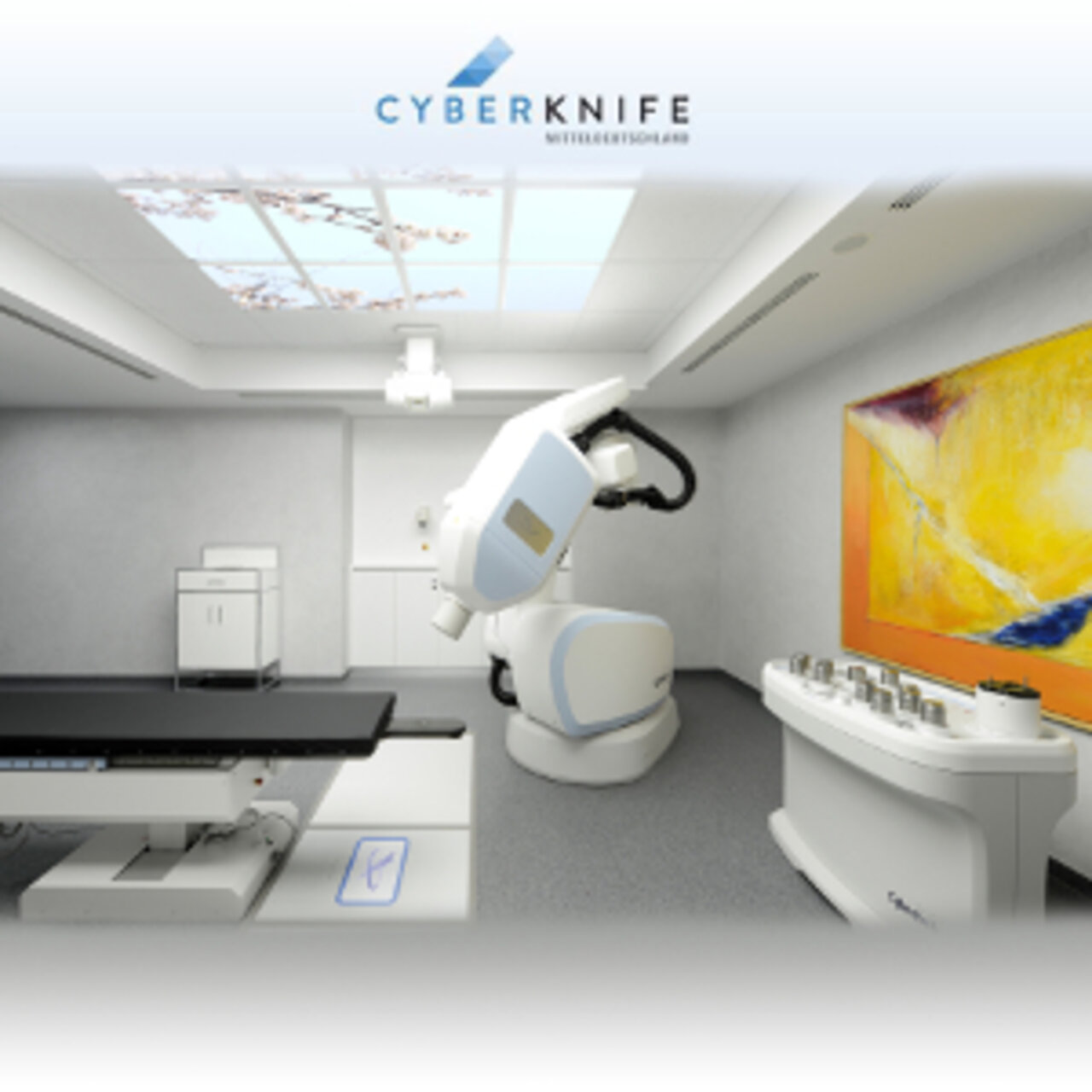Specialists in Pancreatic Cancer
15 Specialists found
Information About the Field of Pancreatic Cancer
What is pancreatic cancer?
Pancreatic cancer, also known as pancreatic carcinoma, is a malignant tumor of the pancreas. Approximately 15 out of 100,000 people get diagnosed with pancreatic cancer every year in Germany, making it the 3rd most common cancer of the digestive tract. Only stomach and colorectal cancers occur more frequently.
Cancer occurs when normal cells become malignant tumor cells. These cells multiply uncontrollably, lose their normal function and displace the surrounding healthy tissue. When tumor cells enter the blood or lymphatic system, they can spread to distant organs and tissues, forming secondary tumors known as metastases.
Pancreatic cancer is classified into different types based on the tissue of origin from which the tumor cells arise. The most common type is ductal adenocarcinoma, rarer types include squamous cell carcinoma, cystadenocarcinoma or acinar cell carcinoma.
Men and women are equally affected by this disease. Pancreatic cancer is primarily a disease of older age, with the median age of onset ranging from 60 to 80 years.
Function of the pancreas
The pancreas is a gland located in the abdominal cavity. Its two main functions are divided into exocrine and endocrine components.
The exocrine part of the pancreas produces digestive secretions, which are released into the duodenum along with bile to aid in the breakdown of food. These secretions contain important enzymes that play a crucial role in the digestion and absorption of fats.
The endocrine part of the pancreas regulates the blood sugar levels by secreting hormones. Insulin is a hormone that lowers blood sugar by facilitating glucose uptake into cells, while glucagon acts as its counterpart by raising blood sugar levels back up. In addition, small amounts of other hormones are released by the pancreas that contribute to precise blood sugar regulation.
If the endocrine function of the pancreas is impaired, the patient may develop diabetes mellitus. An impairment of the exocrine function can lead to digestive issues, where dietary fats are no longer properly absorbed and are instead excreted in the stool, resulting in fatty stools known as steatorrhea.
The pancreas is located horizontally in the upper abdomen and is divided into three parts: the head, which contains the bile ducts, the body, and the tail. The majority of the pancreatic tumors originate from the exocrine part, with most tumor cells forming in the bile duct region of the pancreatic head.
Symptoms: How can pancreatic cancer be recognized?
The pancreas is a relatively small organ that is embedded in the abdomen. As a result, the occurring symptoms are often nonspecific and difficult to directly attribute to the pancreas. The greatest challenge in diagnosing pancreatic cancer is the absence of early symptoms.
Most patients report:
- Lack of appetite
- Dull abdominal pain
- Nausea and weight loss
- Fatigue
- Nonspecific back pain
A relatively common symptom of pancreatic cancer is painless jaundice, characterized by a yellow discoloration of the skin without associated pain. In about 25% of pancreatic head tumors, this may even present as an early symptom. In advanced stages, painless jaundice is present in up to 90% of cases.
Jaundice is a sign of bile duct obstruction leading to bile stasis. This occurs when the tumor compresses the bile ducts, blocking bile flow. In addition to yellowing of the skin and sclera (the white part of the eyes), stool becomes pale, and urine becomes dark, as bilirubin, which is normally excreted through the bile, must find alternative elimination pathways. When jaundice is accompanied by a palpable non tender gallbladder, this is referred to as the Courvoisier sign.
Nonspecific symptoms, such as the new onset of diabetes mellitus or worsening of a preexisting diabetic condition, may also indicate pancreatic cancer.
Due to the nonspecific nature of the symptoms, pancreatic cancer is often only diagnosed at an advanced stage. Moreover, many of the symptoms can indicate pancreatitis, further complicating the diagnosis. Pancreatitis itself can occur as an accompanying condition of pancreatic cancer.
Diagnosis: How is pancreatic cancer detected?
If there are suspicious symptoms, an ultrasound examination is performed first. In some cases, the tumor can be directly detected, but more importantly, any bile duct obstruction or possible liver metastases can be visualized.
In some cases, a blood test may be conducted. However, blood tests play only a minor role in diagnosing pancreatic cancer, as they often show little or very nonspecific changes. The measurement of tumor markers usually does not provide clear evidence of a tumor but is rather used for monitoring the progression of the disease.
Further diagnostic methods include endoscopic ultrasound, ERCP and contrast-enhanced CT scans.
Endoscopic ultrasounds and ERCP
Endoscopic ultrasound allows for the assessment of the tumor size and any involvement of adjacent lymph nodes. An endoscopic retrograde cholangiopancreatography (ERCP) enables internal examination of the bile and pancreatic ducts, while also visualizing bile stasis. Additionally, a catheter may be placed during this invasive procedure to keep the bile ducts open and relieve the bile stasis.
In recent years, the ‘one-stop-shop’ MRI has established itself as the leading diagnostic method. It combines the MRI examination with an ERCP and a MR angiography. The latter allows for a three-dimensional visualization of the vessels. Consequently, this approach maximized diagnostic yield within a single session.
Contrast-enhanced CT
Lastly, contrast-enhanced CT is the most crucial imaging modality to visualize the tumor’s size and extent, screening for metastases and enlarged lymph nodes. CT imaging is essential to determine the course of treatment and assessing whether the tumor can be surgically removed. Particular attention is given to the vascular involvement. If significant vascular involvement is present and major vessels are invaded by the tumor, a complete tumor resection is not feasible without causing massive collateral damage.
Therapy: How is pancreatic cancer treated?
There is a diversity of treatment options and each option should be carefully considered on an individual basis. Each case is discussed in a tumor board, which consists of physicians from various specialties that collaborate to develop the most optimal treatment strategy.
Curative therapy
A curative surgical approach is only feasible in about 20% of cases, as the tumor is often already at an advanced stage at the time of diagnosis. Surgical therapy must always be integrated into an interdisciplinary oncological treatment plan.
Depending on the tumor location, different surgical techniques are available for removal of the tumor, often involving the removal of additional organs such as the spleen or parts of the duodenum. The primary goal of the surgery is the complete resection of malignant tumor tissue with an adequate safety margin.
In general, it is possible to perform the tumor surgery laparoscopically (minimally invasive). This approach has the advantage of a faster recovery, reduced pain, smaller abdominal incisions, resulting in less scarring.
Post-operative (adjuvant) chemotherapy is a crucial part of the treatment plan. Studies have shown that it can prolong patient’s survival. In contrast, a combined of radiochemotherapy is not recommended for pancreatic cancer.
Life without the pancreas
Following the complete removal of the pancreas, its functions must be compensated and replaced. Since blood sugar regulation can no longer be performed by the endocrine pancreas, diabetes mellitus is inevitable. This condition requires lifelong, close monitoring and treatment. Patients must regularly check their blood sugar levels and inject insulin as indicated.
Similarly, the production of digestive enzymes is no longer possible. As a result, these must be supplemented externally. This is typically achieved through regular oral intake of capsules.
Studies have shown that the quality of life for patients following a pancreatic removal is comparable to that of patients with diabetes due to other causes. Proper patient education and compliance are crucial in achieving the best outcomes.
Palliative therapy
If the cancer is in an advanced stage and has already metastasized to other organs, the treatment plan follows a palliative approach. The primary treatment goal is no longer to cure the disease, but to alleviate the patient’s symptoms and improve their quality of life.
To extend life expectancy, chemotherapy may be considered. However, the benefits and risks must be carefully considered and discussed with the patient. Depending on the symptoms, additional interventions may be required, such as improving bile flow to alleviate jaundice symptoms or providing an adequate pain management.
Tumor reduction methods – HIFU for pancreatic cancer
A cutting-edge approach to tumor reduction is high-intensity focused ultrasound (HIFU). This technique is applied externally and uses high-energy ultrasound waves to target the tumor. The intense heat created by these waves causes the tumor cells to ‘cook’ and as a result shrinking the tumor.
While this technique is still in its early stages, numerous studies have shown HIFU to be a successful treatment to reduce tumor size with only minimal side effects. Although this procedure is not considered a standard therapy, it is increasingly used in cases of inoperable pancreatic tumors.
Prognosis of cure for pancreatic cancer
Pancreatic cancer is characterized by a challenging diagnosis, difficult treatment, and a poor prognosis. As a result, it ranks fourth among cancer-related deaths.
The only chance for cure is through radical surgical removal of the tumor combined with chemotherapy. However, only an estimated 15% of pancreatic cancers are resectable at the time of diagnosis. The presence of metastases in other organs further worsens the prognosis.
The overall 5-year survival rate is approximately 8%. This means that only 8% of patients with pancreatic cancer survive 5 years after their initial diagnosis. In an early stage of cancer, where the tumor is small and has not yet metastasized, the 5-year survival rate is around 40%.
Risk factors for pancreatic cancer
The development of pancreatic cancer is multifactorial, with many contributing factors that are still not fully understood or thoroughly researched. However, several risk factor have been identified.
In some cases, genetic predisposition plays a role. Certain genetic mutations increase the likelihood of developing pancreatic cancer.
Studies estimate that in 2-3% of all pancreatic cancers such predispositions are present. Approximately 70% of these cases are associated with familial pancreatic cancer syndrome. It is defined as 2 or more first-degree relatives being affected by pancreatic cancer, without another known hereditary cancer syndrome.
Further risk factors include smoking, high alcohol consumption, severe obesity, chronic pancreatitis, and pancreatic cysts. These factors increase the risk of developing pancreatic cancer.
Prevention of pancreatic cancer
In order to prevent the development of pancreatic cancer, modifiable risk factors should be avoided. In the case of a genetic predisposition, general screenings with a primary care physician are recommended to detect any changes as early as possible. However, a routine screening for healthy individuals is currently not recommended.
In general, it is advisable to maintain a healthy lifestyle, avoid nicotine and excessive alcohol consumption. There is no specific diet for the prevention of pancreatic cancer. However, following a balanced diet in line with the guidelines from the German Society for Nutrition (DGE) is recommended.
Which physicians and clinics are specialists for pancreatic cancer?
For individuals diagnosed with pancreatic cancer, finding the best medical care is a top priority. Therefore, many patients ask themselves: which clinic is the best for pancreatic cancer?
The question itself cannot be objectively answered as no reputable doctor would claim to be the best. Instead, patients should rely on the experience of the doctor. The more patients a doctor treats, the more experienced they become in their specialty.
Thus, specialists for pancreatic cancer are considered to be physicians and clinics that focus on the diagnosis and treatment of cancers of the digestive tract. These physicians and clinics can obtain a certification as a ‘Visceral Oncology Center’ through the organisation OnkoZert.














